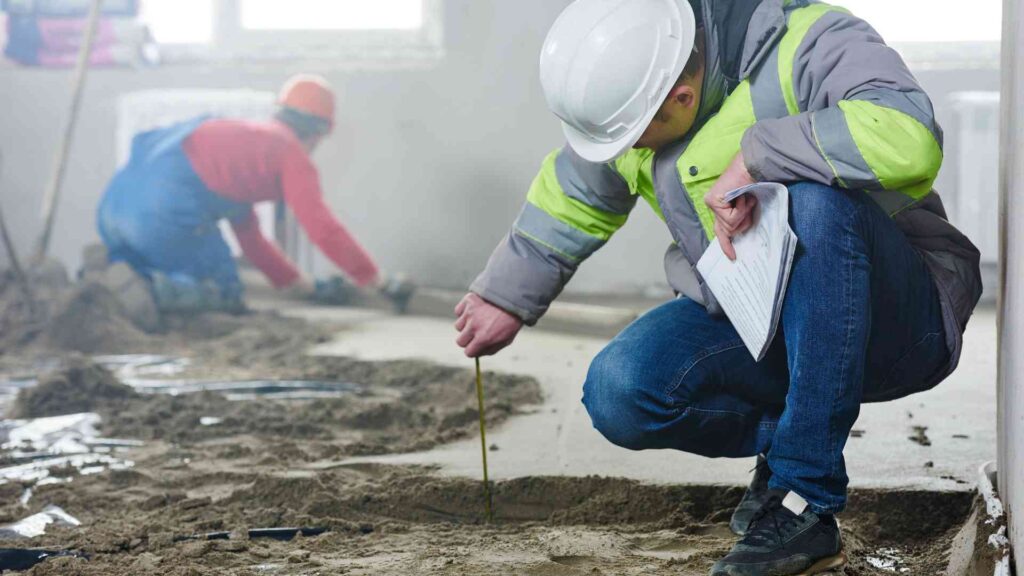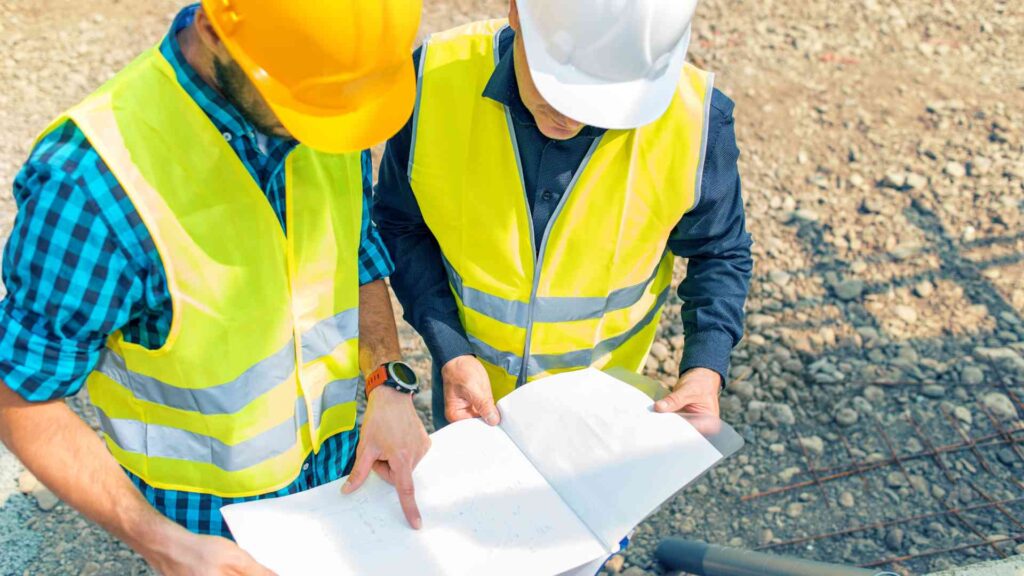Concrete is a widely used material in construction projects worldwide. However, the environmental impact of traditional concrete production has raised concerns about its sustainability. In response to these concerns, sustainable concrete options have emerged as environmentally friendly alternatives. Understanding the concept of sustainable concrete is crucial for making informed choices in construction projects.
Understanding the Concept of Sustainable Concrete
Defining sustainability in construction is the first step to understanding sustainable concrete. In essence, sustainability refers to the practice of meeting the needs of the present generation without compromising the ability of future generations to meet their own needs. In the context of construction, sustainability encompasses various factors such as resource efficiency, reducing environmental impact, and promoting social and economic benefits.
Concrete plays a significant role in sustainable construction due to its versatility and durability. However, the traditional production process of concrete contributes to its environmental impact, primarily through carbon emissions.
Defining Sustainability in Construction
Sustainability in construction involves practices that minimize negative impacts on the environment, enhance building efficiency, and promote ecological balance. It encompasses aspects such as energy efficiency, waste reduction, and the use of environmentally friendly materials.
Energy efficiency is a crucial aspect of sustainable construction. By implementing energy-efficient design principles, buildings can reduce their energy consumption and minimize their carbon footprint. This can be achieved through the use of insulation materials, efficient HVAC systems, and the integration of renewable energy sources such as solar panels.
Waste reduction is another important element of sustainable construction. Construction projects generate a significant amount of waste, including excess materials, packaging, and demolition debris. By implementing waste management strategies such as recycling and reusing materials, construction sites can minimize their impact on landfills and conserve valuable resources.
The use of environmentally friendly materials is also a key component of sustainable construction. This includes selecting materials that have a lower environmental impact throughout their lifecycle, from extraction to disposal. For example, using sustainably sourced timber instead of non-renewable materials like steel or concrete can help reduce deforestation and promote the regeneration of forests.
The Role of Concrete in Sustainable Construction
Concrete is an essential component in sustainable construction due to its long lifespan, high thermal mass, and recyclability potential. Its ability to store and release heat can contribute to energy efficiency in buildings. By incorporating concrete walls or floors, buildings can benefit from the thermal mass effect, which helps regulate indoor temperatures and reduce the need for excessive heating or cooling.
Moreover, concrete can be recycled and used as an aggregate in new concrete production, reducing the need for raw materials. This process, known as concrete recycling, not only conserves natural resources but also reduces the energy consumption and carbon emissions associated with concrete production. Additionally, recycled concrete can be used for various applications such as road construction, reducing the demand for virgin aggregates.
In recent years, advancements in concrete technology have also led to the development of more sustainable alternatives. For example, the use of supplementary cementitious materials (SCMs) such as fly ash, slag, or silica fume can partially replace cement in concrete mixtures. This not only reduces the carbon footprint of concrete but also helps utilize industrial by-products that would otherwise be disposed of as waste.
Furthermore, the concept of “green concrete” has gained traction in the construction industry. Green concrete refers to concrete that incorporates recycled materials, uses less cement, and has a lower carbon footprint compared to traditional concrete. This innovative approach to concrete production aims to minimize environmental impact while maintaining the desired structural properties.
In conclusion, sustainable concrete is a crucial element in the pursuit of sustainable construction. By adopting practices that enhance resource efficiency, reduce environmental impact, and promote social and economic benefits, the construction industry can contribute to a more sustainable future. Through the use of energy-efficient design principles, waste reduction strategies, and the integration of environmentally friendly materials, concrete can play a significant role in creating buildings that are both durable and environmentally responsible.
The Environmental Impact of Traditional Concrete
While concrete offers various advantages in construction, its environmental impact cannot be overlooked. The production process of traditional concrete involves the extraction of materials such as limestone, sand, and gravel, which can deplete natural resources and disturb ecosystems.
In addition to the extraction of raw materials, the production of traditional concrete involves a complex process that has significant environmental implications. Let’s delve deeper into the production process and explore its impact on the environment.
The Production Process of Traditional Concrete
The production of traditional concrete begins with the mining of raw materials. Limestone, sand, and gravel are extracted from quarries, which can disrupt local ecosystems and habitats. The extraction process often involves heavy machinery and can result in the destruction of natural landscapes.
Once the raw materials are obtained, they are transported to cement manufacturing plants. Here, the materials are crushed and heated in kilns to produce clinker, a key component of cement. The heating process requires a substantial amount of energy, usually derived from fossil fuels, further contributing to greenhouse gas emissions.
After the clinker is produced, it is ground into a fine powder known as cement. This grinding process also requires energy and releases additional carbon dioxide emissions. The cement is then mixed with water, sand, and aggregate to create the final concrete mixture.
Carbon Footprint of Traditional Concrete
The carbon footprint of traditional concrete is primarily attributed to the high-energy requirements for cement production and the release of carbon dioxide during the calcination process. Calcination is the heating of limestone to produce lime, a necessary step in cement production.
It is estimated that for every ton of cement produced, approximately one ton of carbon dioxide is emitted into the atmosphere. This significant emission of greenhouse gases contributes to climate change and global warming.
Furthermore, the transportation of raw materials and the final concrete product also adds to the carbon footprint of traditional concrete. The long distances traveled by trucks to transport materials and deliver concrete to construction sites result in additional emissions of greenhouse gases.
Considering the environmental impact of traditional concrete, it is crucial to explore alternative construction materials and methods that can reduce its carbon footprint. Sustainable alternatives such as recycled concrete, geopolymer concrete, and low-carbon cement are gaining attention in the construction industry as potential solutions to mitigate the environmental impact of traditional concrete.
By adopting these alternatives and implementing sustainable practices throughout the construction process, we can strive towards a more environmentally friendly and sustainable future.
Environmentally Friendly Alternatives to Traditional Concrete
To address the environmental impact of traditional concrete, several sustainable alternatives have emerged, offering more eco-friendly options in construction projects.
As the construction industry continues to grow, so does the need for sustainable building materials. Traditional concrete, while widely used, has a significant environmental footprint. It is responsible for a large amount of carbon dioxide emissions and consumes vast amounts of natural resources. To combat these issues, researchers and engineers have developed innovative alternatives that aim to reduce the environmental impact of concrete production.
Green Concrete: An Overview
Green concrete, also known as eco-concrete or environmentally friendly concrete, is produced using alternative materials and innovative techniques that reduce its carbon footprint and environmental impact. It often incorporates recycled or waste materials, such as industrial by-products or supplementary cementitious materials, to replace a portion of the cement content.
One example of a supplementary cementitious material used in green concrete is fly ash, a by-product of coal combustion. By incorporating fly ash into the concrete mix, the need for cement, which is a major contributor to carbon dioxide emissions, can be significantly reduced. This not only reduces the environmental impact but also helps to conserve natural resources.
In addition to using recycled or waste materials, green concrete also employs innovative techniques to enhance its sustainability. For instance, some manufacturers use carbon capture and storage technology to capture carbon dioxide emissions from industrial processes and incorporate them into the concrete mix. This not only reduces greenhouse gas emissions but also helps to mitigate climate change.
Recycled Aggregate Concrete: A Sustainable Choice
Another sustainable alternative is recycled aggregate concrete, which utilizes crushed concrete from demolished structures as an aggregate in new concrete production. By recycling construction waste, this form of concrete reduces the need for raw materials and minimizes landfill waste.
Recycled aggregate concrete offers several advantages over traditional concrete. Not only does it reduce the demand for natural aggregates, such as gravel and sand, but it also helps to divert construction waste from landfills. This not only reduces the strain on natural resources but also decreases the environmental impact associated with waste disposal.
Furthermore, the use of recycled aggregate concrete can contribute to energy savings. The production of traditional concrete requires the extraction and processing of raw materials, which consumes significant amounts of energy. In contrast, recycled aggregate concrete utilizes materials that have already been processed, reducing the energy requirements for production.
It is worth noting that while recycled aggregate concrete offers numerous benefits, it also presents some challenges. The quality and consistency of the recycled aggregates can vary, which may affect the performance and durability of the concrete. However, ongoing research and advancements in technology are addressing these issues, making recycled aggregate concrete a viable and sustainable choice for construction projects.
Benefits of Using Sustainable Concrete in Construction
The use of sustainable concrete in construction offers numerous benefits, extending beyond environmental considerations.
Economic Advantages of Sustainable Concrete
Sustainable concrete options can contribute to cost savings in the long run. The use of recycled materials can reduce the need for raw materials, lowering construction costs. Additionally, sustainable buildings often exhibit higher energy efficiency, resulting in reduced operational expenses over time.
Environmental Benefits of Sustainable Concrete
By reducing carbon emissions and minimizing resource extraction, sustainable concrete helps mitigate climate change and conserve natural resources. It contributes to improving air and water quality while promoting a more sustainable built environment.
Challenges and Solutions in Implementing Sustainable Concrete
Despite the advantages of sustainable concrete, certain challenges exist in its widespread implementation. Overcoming these barriers requires innovative solutions and collaboration between stakeholders in the construction industry.
Overcoming Barriers to Sustainable Concrete Adoption
One of the main barriers to adopting sustainable concrete is the lack of awareness and understanding among construction professionals and clients. Educating stakeholders about the benefits and availability of sustainable alternatives can promote their adoption in construction projects.
Innovations in Sustainable Concrete Technology
Ongoing research and development in sustainable concrete technology are driving innovation and improving its performance. From the use of novel materials to advanced production techniques, continuous improvements are being made to enhance the sustainability and durability of concrete.
In conclusion, sustainable concrete offers environmentally friendly choices for construction projects. Understanding the concept of sustainable concrete, the environmental impact of traditional options, and the benefits of sustainable alternatives enables construction professionals and clients to make informed decisions that contribute to a more sustainable built environment.


